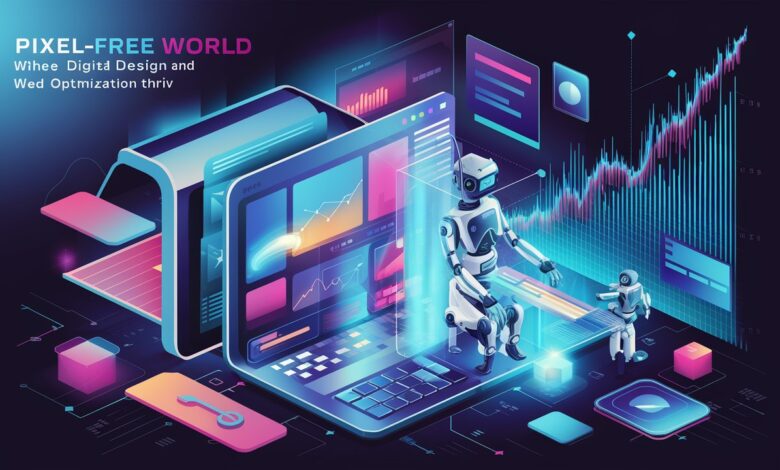Pxless: The Future of Pixel-Free Digital Design and Web Optimization

In the ever-evolving world of digital design and web technology, pxless is emerging as a revolutionary concept reshaping how we define visual precision, scalability, and responsiveness on the web. As design systems evolve and user experiences become increasingly complex, pxless design frameworks offer a seamless, scalable, and future-ready approach to building digital products that perform exceptionally across devices, screen sizes, and resolutions.
This comprehensive guide explores the meaning, advantages, applications, and SEO benefits of pxless, positioning it as a key element in modern web design and optimization strategies.
What Is Pxless?
Pxless refers to a design philosophy and development approach that minimizes or eliminates the reliance on static pixel (px) measurements in digital interfaces. Instead, pxless systems prioritize relative units like em, rem, %, vh, and vw, which dynamically adjust based on the device’s display characteristics.
In a pxless environment, design elements are fluid, adaptive, and resolution-independent, ensuring that every user — whether on a smartphone, tablet, or 4K desktop monitor — experiences a visually optimized and proportionate layout.
Unlike traditional pixel-based designs, pxless design aligns with responsive web design principles, providing developers and designers with more flexibility, precision, and consistency in user interface (UI) creation.
The Evolution of Pxless Design
Before the rise of pxless methodologies, designers depended heavily on fixed-pixel dimensions. This approach, while precise for certain static layouts, failed to adapt gracefully to the diversity of modern devices and screen resolutions.
With the introduction of responsive frameworks like Bootstrap, CSS Grid, and Flexbox, web development entered a new era — one that embraced scalability over static precision. Pxless design represents the next logical step in this progression: a commitment to truly fluid and adaptive digital environments.
As digital interfaces become more complex, pxless design principles empower developers to create experiences that not only look beautiful but also perform efficiently across all viewing contexts.
Key Benefits of Pxless Web Design
1. Enhanced Responsiveness and Scalability
The pxless approach allows layouts to adapt seamlessly to any screen resolution, from tiny mobile devices to ultra-wide monitors. Relative units ensure that proportions remain consistent, improving accessibility and visual harmony.
2. Improved Accessibility
By using scalable units like em and rem, pxless design supports users with visual impairments who rely on custom zoom settings or larger font sizes. This makes your website more inclusive and ADA-compliant.
3. Faster Development and Maintenance
When pixel dependencies are removed, developers spend less time recalibrating elements for different devices. This leads to faster design iterations, simpler maintenance, and more efficient codebases.
4. Future-Proof Design
Pxless ensures that your website or app remains compatible with future display technologies — including foldable screens, AR/VR devices, and ultra-high-definition resolutions. It’s an investment in long-term adaptability.
5. Better SEO and User Experience
Search engines prioritize websites that deliver fast load times and mobile-friendly experiences. Pxless designs naturally achieve these goals through lighter CSS, flexible grids, and optimized rendering, improving both SEO rankings and user retention.
Core Principles Behind Pxless Design
Relative Measurement Units
Pxless design relies on CSS units such as:
-
em – Relative to the font size of the parent element.
-
rem – Relative to the root element’s font size.
-
% (percent) – Relative to the containing element.
-
vw/vh – Relative to the viewport width and height.
These units enable fluidity across screen sizes without breaking the layout structure.
![]()
Fluid Typography
Instead of assigning a fixed pixel size, pxless typography uses a scalable font system that adjusts based on the user’s viewport. This enhances readability and maintains consistent proportions.
Adaptive Spacing and Grids
Using CSS Grid and Flexbox, pxless design dynamically allocates spacing and alignment based on available space. This eliminates rigid pixel-based margins and paddings.
Responsive Images and Media
Images and videos in pxless environments use max-width: 100% and height: auto, ensuring smooth scaling without distortion or cropping.
Implementing Pxless in Web Development
Transitioning to pxless requires a shift in mindset — from fixed layouts to fluid frameworks. Here’s how to implement pxless design effectively:
-
Start with a Mobile-First Approach:
Define your layout in flexible terms, using relative units from the smallest viewport upward. -
Use CSS Variables:
Define global spacing, font sizes, and scaling factors for consistency across components. -
Leverage Frameworks like Tailwind CSS or Bootstrap 5:
These frameworks already encourage responsive, pxless design principles through predefined classes and utility-based systems. -
Optimize Media Queries:
Avoid hardcoding pixel breakpoints; instead, use relative or content-based breakpoints to make your design more adaptable. -
Test Across Devices:
Always validate your pxless layout on multiple devices and orientations to ensure consistent usability and performance.
Pxless and SEO Optimization
A pxless design does more than improve visuals — it boosts search engine performance. Google’s algorithms reward websites that are mobile-friendly, lightweight, and accessible. Pxless designs naturally fulfill these criteria by reducing layout shifts and improving Core Web Vitals scores such as:
-
Largest Contentful Paint (LCP)
-
Cumulative Layout Shift (CLS)
-
First Input Delay (FID)
Additionally, pxless systems minimize render-blocking CSS and reduce the risk of overflow or clipping issues that can harm user experience metrics.
The Future of Pxless Technology
As the digital landscape continues to evolve, pxless is poised to become the new standard for modern web and UI design. With the increasing emphasis on universal accessibility, cross-platform optimization, and AI-driven design systems, pxless will redefine how developers and designers collaborate to create unified experiences across devices.
In the near future, we can expect frameworks and design tools to offer pxless automation features, enabling designers to export scalable designs directly from platforms like Figma, Sketch, or Adobe XD.
FAQs About Pxless
1. What makes pxless different from responsive design?
While both promote adaptability, pxless goes a step further by eliminating absolute pixel units entirely, ensuring complete fluidity without fixed constraints.
2. Is pxless design suitable for all websites?
Yes. From simple blogs to enterprise web applications, pxless principles enhance flexibility, performance, and visual consistency.
3. Does pxless affect website loading speed?
Absolutely — positively. Pxless reduces CSS complexity and ensures faster rendering, directly improving loading times and SEO performance.
4. Can pxless design be integrated with existing projects?
Yes, developers can gradually transition by replacing pixel values with relative units and optimizing responsive components.
Conclusion
The pxless approach is not just a design trend — it’s a transformative philosophy that redefines scalability, responsiveness, and accessibility in modern web development. By embracing pxless principles, developers and designers can craft websites that not only look stunning across every device but also perform seamlessly, future-proofing their digital presence for years to come.



